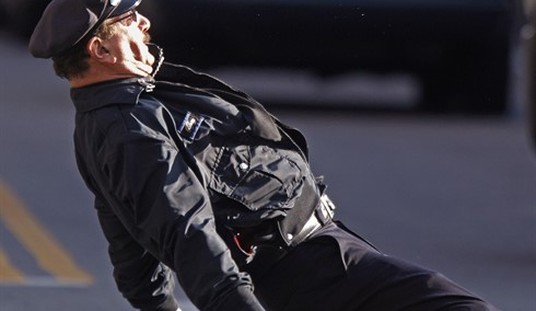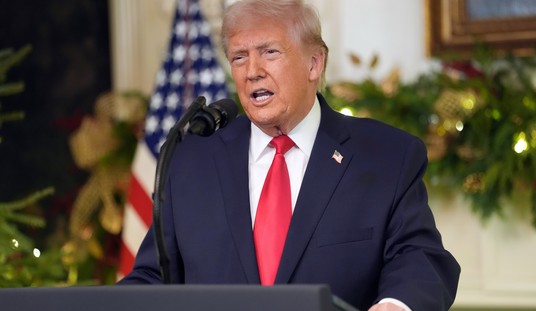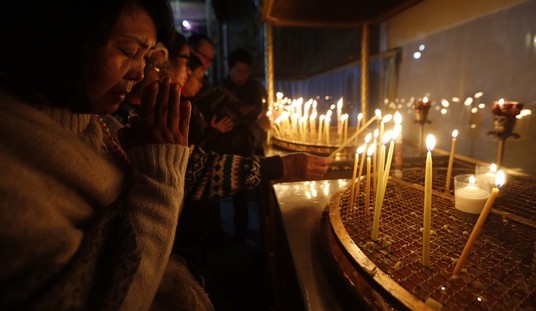Note: Most Thursdays, I take readers on a deep dive into a topic I hope you'll find interesting, important, or at least amusing in its absurdity. These essays are made possible by — and are exclusive to — our VIP supporters. If you'd like to join us, take advantage of our 60% off promotion.
On Tuesday, President Donald Trump — in his customarily off-handed way — said that his previous 50-day deadline for a ceasefire with Ukraine, laid down two weeks ago, was now shortened to just "10 or 12 days from today."
"There's no reason in waiting... We just don't see any progress being made."
Trump doesn’t like the idea of slapping sanctions on Russia or punitive tariffs on its remaining trade partners like China and India. "I don’t want to do that to Russia," he also said on Tuesday. But when asked about a possible summit with Russian strongman Vladimir Putin, Trump added, "I’m not so interested in talking anymore.”
The Kremlin had no immediate reply to Trump's announcement, but on Tuesday night, Russia launched another massive missile and drone attack on Kyiv and other cities. The strike involved more than 300 Iranian-designed Shahed drones and decoys, and eight Iskander-K cruise missiles. Kyiv says its defenses intercepted or jammed 288 drones and three missiles. Five missiles and 21 drones got through.
Nine civilians were killed, another 124 were wounded, and a nine-story apartment building largely collapsed after being struck.
As of this morning, rescue crews are still looking for survivors in the rubble.
According to Reuters, the Russian defense ministry claimed that the attack struck "Ukrainian military airfields and ammunition depots as well as businesses linked to what it called Kyiv's military-industrial complex."
On the ground, Russia didn’t hit — and doesn't even appear to have targeted — any military units or facilities. So if that was Putin's reply to Trump's abbreviated ceasefire deadline, I suppose it's "Message sent and received."
And Another Thing: Kyiv's drone attacks — particularly June's successful Operation Spiderweb — focus almost exclusively on military targets. "Russia is making the same mistake Hitler made against Britain during the Battle of Britain. Russia is focusing on cities instead of vital Ukrainian targets like airfields or Army formations," analyst John Bulkeley noted earlier this month. He calls it "Cold comfort for the people living in the cities," but thinks Russia's questionable priorities "may just win Ukraine the war." I'm increasingly certain the war will have no clear-cut winners, but John is correct about the Battle of Britain parallel.
"He’s very nice all the time," Trump said about Putin at a cabinet meeting earlier this month, "but it turns out to be meaningless."
So now, reluctantly, Trump turns to his favorite cudgel: economic warfare.
The tariff we can forget about is the 100% tax Trump would impose on Russian imports. Thanks to current sanctions — and the fact that Russia produces almost nothing aside from minerals and energy worth buying — our trade with Russia is a paltry $3.5 billion annually. Even the increasingly cash-strapped Kremlin can easily afford to write that off.
That's why Trump intends, if necessary, to hit India, China, Brazil, Turkey, and any other importers of Russian energy and goods with tariffs starting at 25% and perhaps going up to 100%. In other words, buy Russian oil and lose access to the American consumer and our world-crushing spending power.
Even under the existing sanctions regime, with a cap on the price Russia is allowed to charge for energy exports, foreign oil and gas sales generate 30% of Moscow's total federal budget revenue. A government with half a million men at war can’t afford to lose even a fraction of that.
If Beijing (and perhaps India) play along with Trump and use their leverage to twist Putin's arm, then we might just find a little peace in our time — the real kind, not the Neville Chamberlain boast.
If not? That's where things get dicey. Trump believes he can use secondary tariffs to force Putin into a ceasefire, but Putin likely imagines that American sticker shock on cheap Chinese imports is his pressure point on Trump — and he doesn't even need to squeeze himself.
I don't pretend to know which man, if either, is correct. I also don't pretend to know what Xi Jinping might do, but I do know he hasn't been afraid to hit us where it hurts — mostly with our dependency on their rare earth metals — to wring trade concessions out of the White House.
Putin isn't the only foe with cards to play.
The remaining question is as old as sanctions and tariffs: Will they produce the desired effects?
Put more bluntly: Is there any degree of economic pressure strong enough to induce Putin to accept a ceasefire?
As I sat down to write this week's essay, I had no idea. So let's scour the news and social media to try and get a feel for Russia's strengths and weaknesses, and how the Kremlin might (or might not) ride out the storm — and also maintain the offensive against Ukraine.
Because that's the trick, isn't it? It isn't enough for Moscow to keep the economy afloat while figuring out how to maintain the imports they require — they have to keep war production going, too. Otherwise, Putin might as well agree to a ceasefire that will likely let Russia keep the choice bits of Ukraine they've already taken.
You can't fight a war without men, and not even Russia has an endless supply of them.
Western analysts estimate Russia has suffered around 250,000 dead since Putin's "Special Military Operation" began in February 2022, and at least three times that many wounded, missing, or captured. The Russian army's "meat-grinder assaults" are believed to have caused 100,000 of those deaths — this year alone.
If Ukraine is close to cracking, you couldn't tell by Russia's accelerating losses.
The ethnic Russians liberated in Ukraine's east aren't exactly enjoying boom times:
Due to Russian occupation, Donetsk region has been left without water.
The region is currently suffering from extreme heat, and water is almost entirely unavailable. Both drinking and technical water now has to be delivered to more than 1.2 million residents of Donetsk and Makiivka, as well as to half a million people in other towns and cities.
There is also a shortage of water for Russian soldiers from the "Center" and "East" military groupings.
Details (and a couple of brief-but-heart-rending videos) at the link.
If you think American home-shoppers have it bad with mortgage rates averaging 6.75%, consider this. Wartime spending has jacked up inflation to 10% (official) or maybe 15% (unofficial but likely more accurate) and interest rates to 20%. Putin managed to wrangle a symbolic rate cut out of the central bank from 21%, but anything significantly less risks hyperinflation.
Nevertheless, Putin says defense spending will rise again next year, and he's doubled down on recruitment efforts. Russians haven't suffered like this since the 1990s, and that was without losing a quarter of a million sons, husbands, and fathers to war.
Unlike the economic depression caused by the dissolution of the Soviet Union, today there's no bottom in sight.
Russia's transport system is a mess, too. "Since 2022 Russian railroads have increasingly had to deal with shortages and sabotage," StrategyPage reported in June. "The shortages start with the fact that many of the 740,000 railway staff in 2022 soon left to join the military." And they don't end with the fact that more than 100,000 railcars are sidelined due to normal wear and tear that Moscow lacks the parts, crews, and (increasingly) the skills to repair.
That brings us to the motorcycles.
Back in February, Russian troops fighting in Ukraine were first seen using donkeys for frontline transportation, and the supply situation being as poor as it is, perhaps also as dinner on the hoof. "Neither option says much good about the current condition of the Russian military," I wrote back then. "Various analysts in 2023 and 2024 warned that Russian trucks were running on bald tires and that it wouldn't be long before there weren't enough of even those to keep supply trucks running."
Well, now sights like this one are increasingly common:
Russian motorcycle modified to transport artillery shells to the front pic.twitter.com/6rLesWS66Z
— Preston Stewart (@prestonstew_) July 28, 2025
These, too, for maximum absurdity:
Russian frontline logistic motorcycle riders can be imaginative (though short-lived), as seen here in this improvised trailer.
— Roy🇨🇦 (@GrandpaRoy2) July 29, 2025
An EW jammer with cloverleaf antennas completes the setup of the bike.
1/ https://t.co/n0gXrCOPEO https://t.co/szroxh07rD pic.twitter.com/kpR2LG6Apc
Do take note where Roy wrote, "Although still an easy target for FPVs, the time spent traversing the killing zone is minimized." That's no small thing.
Some, like military analyst Trent Telenko, look at those motorcycles and conclude, "The death by drone attrition of Russian motor transport has accelerated." I'm not so sure. Motorcycles are motor transport — small and with extremely limited capacity, granted — but they might be the correct kind of motor transport for two armies still trying to cope with one another's drones.
Also: I'd wager next month's house payment that Russia can churn out a metric crapton of motorcycles, even under a secondary tariffs regime.
And Another Thing: A quick update on Operation Spiderweb, Kyiv's massive attack on Russia's bomber force, using smuggled drones and operators. Ukraine initially claimed to have damaged or destroyed 41 Russian aircraft, including up to 22 irreplaceable Tu-95 and Tu-22 strategic bombers — more than a third of Moscow's entire inventory. I warned readers at the time that those claims were likely on the high side. But not by much, apparently. Open source intel since then indicates that Ukraine destroyed or damaged a bare minimum of 13 strategic bombers, but perhaps as many as three dozen. That's 10-30% of Russia's airborne nuclear deterrent taken out of action in a single strike.
I started this section of the essay admitting that I didn't know whether Russia had the economic wherewithal to endure a trade war. Having gone through weeks and months worth of news, I still don't. So while donkey convoys and jury-rigged motorcycles make for colorful anecdotes, the real question is whether China and India can keep skirting sanctions after Trump increases the pressure.
They've proven plenty creative at skirting sanctions so far. Admittedly, though, the sanctions Russia and her trade partners are so deft at avoiding were imposed during the Biden administration, and — surprise! — they're more full of holes than a wheel of Swiss cheese put on a fencepost by a drunk redneck with a 12-gauge.
Trump, it's safe to assume, won't be so careless or stupid as whoever ran the Biden cabal. And there might be no better time than now to put on the economic squeeze, as George Friedman noted a week ago:
Just last week, reports emerged that three major Russian banks had requested help from the central bank to bail them out. The major losers in this war, apart from the dead, were the oligarchs, whose assets were frozen by foreign banks and who could no longer attract much-needed investment from other countries. They also lost much of their access to foreign markets (how much depended on how badly a given market needed Russian hydrocarbons). The economy had not yet truly bloomed when Russia invaded Ukraine, but it was on the right track. The war has since derailed its progress.
On the other hand, Friedman warned, "Given the failure in Ukraine and the inability to resurrect Russian power, it is impossible for Putin to make peace."
If Xi won't apply the necessary pressure, perhaps the oligarchs will. But there's been endless conjecture these last three years about Putin's onetime allies forcing him out — perhaps out a window, in classic Putin fashion — but there's been scant evidence of anything like that in all this time.
Still, it does at least feel like events might be coming to a head, whether or not we get the ceasefire that Trump wants, Zelensky will accept, and Putin resists.
Back in March, I wrote a Thursday Essay titled "Off-Ramps to Nowhere" about the increasingly desperate military situation on both sides in Putin's stupid war, and concluded:
"I’ve had very good discussions with President Putin," Trump said before Friday's meeting that was supposed to have been "a very good discussion" with Zelenskyy. Trump continued, "I’m not aligned with Putin. I’m not aligned with anybody. I’m aligned with the United States of America. And for the good of the world."
There's the off-ramp. Why won't either man take it?
Since then, Trump whipped Zelensky into line, and the Ukrainian president now seems to understand his proper place in this relationship — at a seat at a negotiating table.
Putin, meanwhile, has yet to budge from his maximalist war aim — the complete subjugation of Ukraine.
Three-plus years in, the Russo-Ukraine War has reached that familiar turning point, when people get restless, and governments get desperate. The longer things go on, the greater the risk of a "gray swan event" with potentially disastrous effects for one side, the other, or even globally.
Russia reportedly is ramping up Shahed production high enough to launch 2,000-drone waves by November. Kyiv says its domestic ballistic missile program is developing nicely. Neither side is able to force a decision on the battlefield, so both sides are increasingly willing to hurt the other by whatever means.
That's how you end up with some terrible gray swan event.
Those are the stakes, and Trump understands them. That's why he's increasingly willing to drop what Austin Bay described as an "Economic Nagasaki" on Moscow. "Essentially, Trump intends to economically embargo Putin's regime and its various supporters and then strangle their economies."
What we don't know is what happens if it doesn't work.
Miranda Devine asked Trump on her podcast earlier this week, "How will it (Ukraine war) end?"
"To be determined," he said. "Let's see what happens."
Last Thursday: Hey, Kids — Let's Talk About Genocide!










